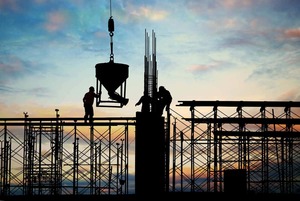Is Scaffolding Safe? Everything You Need to Know
الجسم
When it comes to working on elevated projects—whether it’s painting the exterior of your home, repairing a roof, or managing a construction site— scaffolding often becomes a key tool to ensure access and efficiency.
But is scaffolding safe? This is a common concern among homeowners, DIY enthusiasts, and even seasoned roofing professionals at scaffolding Berkshire. The short answer is yes—scaffolding can be safe if used correctly. However, without the right precautions and understanding of its proper use, it can pose serious risks.
This blog offers a comprehensive look at scaffolding safety, outlining potential risks and providing actionable guidance to ensure you can use it with confidence.
What Makes Scaffolding a Reliable Choice?
Scaffolding is designed to provide a stable platform for working at height. It is preferred over ladders for tasks requiring extended time or significant movement while aloft. Most scaffolding systems are engineered to hold substantial weight and remain stable, even at considerable heights.
However, the level of safety directly depends on factors like the quality of materials, proper assembly, and adherence to safety guidelines.
Common Risks Associated with Scaffolding
Understanding the risks can help you take the necessary steps to mitigate them. Here are the most frequent scaffolding-related hazards:
- Falls from Height
The primary risk of using scaffolding lies in workers or users falling off due to a lack of guardrails, improper use of harnesses, or unsecured platforms.
- Scaffolding Collapse
Poor construction, defective materials, or overloading the scaffold can lead to collapses, posing serious dangers to both workers and bystanders.
- Slips and Trips
Uneven scaffold surfaces, wet platforms, or clutter can result in slips and trips while working.
- Electrical Hazards
Erecting scaffolding too close to power lines can expose users to electrical risks.
- Weather-Related Risks
Wind, rain, or icy conditions can turn a scaffold into a highly precarious structure, even if it’s properly assembled.
Scaffolding Safety Tips for Homeowners, DIY Enthusiasts, and Professionals
1. Use High-Quality Materials
Ensure the scaffolding you use is certified to meet safety standards. Opt for platforms made of durable materials like galvanised steel or aluminium, and avoid using damaged or worn-out components.
2. Hire Professionals for Set-Up
If you have no prior experience, it’s advisable to engage professionals to assemble the scaffolding. Poor assembly is one of the leading causes of scaffold-related accidents.
3. Inspect Before Use
Before stepping onto a scaffold, carry out a thorough inspection for loose bolts, weak joints, rusted sections, or missing guardrails. Any irregularities must be addressed immediately.
4. Use Proper Safety Equipment
- Always wear a hard hat while working on or near scaffolding.
- Use a harness if the workspace exceeds 4 metres in height.
- Wear slip-resistant footwear to minimise the chance of losing your footing on slippery surfaces.
5. Avoid Overloading
Check the weight capacity of your scaffold and ensure that it accommodates not just people but also tools and materials. Overloading can compromise the structure’s stability.
6. Keep a Safe Distance from Electrical Hazards
Scaffolding must be placed at least 3 metres away from overhead power lines to prevent the risk of electrocution.
7. Secure the Base
Ensure the scaffolding is set on a level, stable surface. If the ground is uneven, use base plates and adjustable screw jacks to stabilise the structure.
8. Monitor Weather Conditions
Avoid using scaffolding in high winds, heavy rain, or icy conditions. These elements can make the surface dangerous and increase the likelihood of accidents.
9. Educate Workers or Participants
If multiple individuals are involved in the project, ensure everyone receives basic training on scaffold safety and usage policies.
UK Building Regulations and Scaffolding Safety
If you’re working on a project in the UK, you need to be aware of local regulations surrounding scaffolding use:
- Work at Height Regulations 2005: This law emphasises minimising risks associated with working at height for both employees and contractors.
- HSE Guidelines: The Health & Safety Executive (HSE) provides detailed guidance on ensuring scaffolding safety, from choosing the right type to performing regular maintenance checks.
By adhering to these regulations and guidelines, you can ensure both compliance and safety during your project.
When to Choose a Professional Scaffolding Service
While confident DIY enthusiasts often take on scaffold assembly themselves, there are cases when hiring a professional service is the safer, wiser choice. These include projects with significant height, uneven terrain, or complex structures requiring advanced setup techniques.
Professional scaffolding companies bring expertise as well as access to premium materials, ensuring a safer and more efficient experience for your project.
Final Thoughts
Scaffolding can be an essential tool for working at height, but like any tool, it must be used responsibly. By understanding the risks and following professional safety protocols, you can leverage scaffolding to complete your project efficiently without compromising safety.
If your project requires scaffolding but you’re unsure how to get started safely, consult with a professional in your area to ensure everything meets the necessary standards. Safety should always come first.
Whether you’re a homeowner repainting your exterior, a DIY enthusiast repairing a roof, or a professional roofer working on a client’s site, taking scaffolding safety seriously is non-negotiable. A well-secured scaffold isn’t just a better working environment—it’s peace of mind.








تعليقات